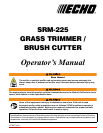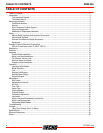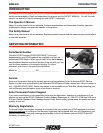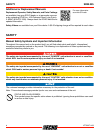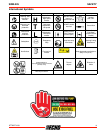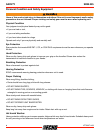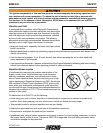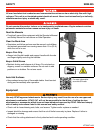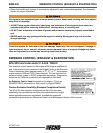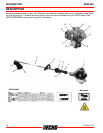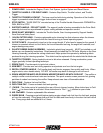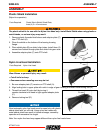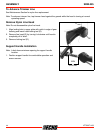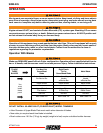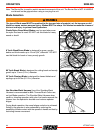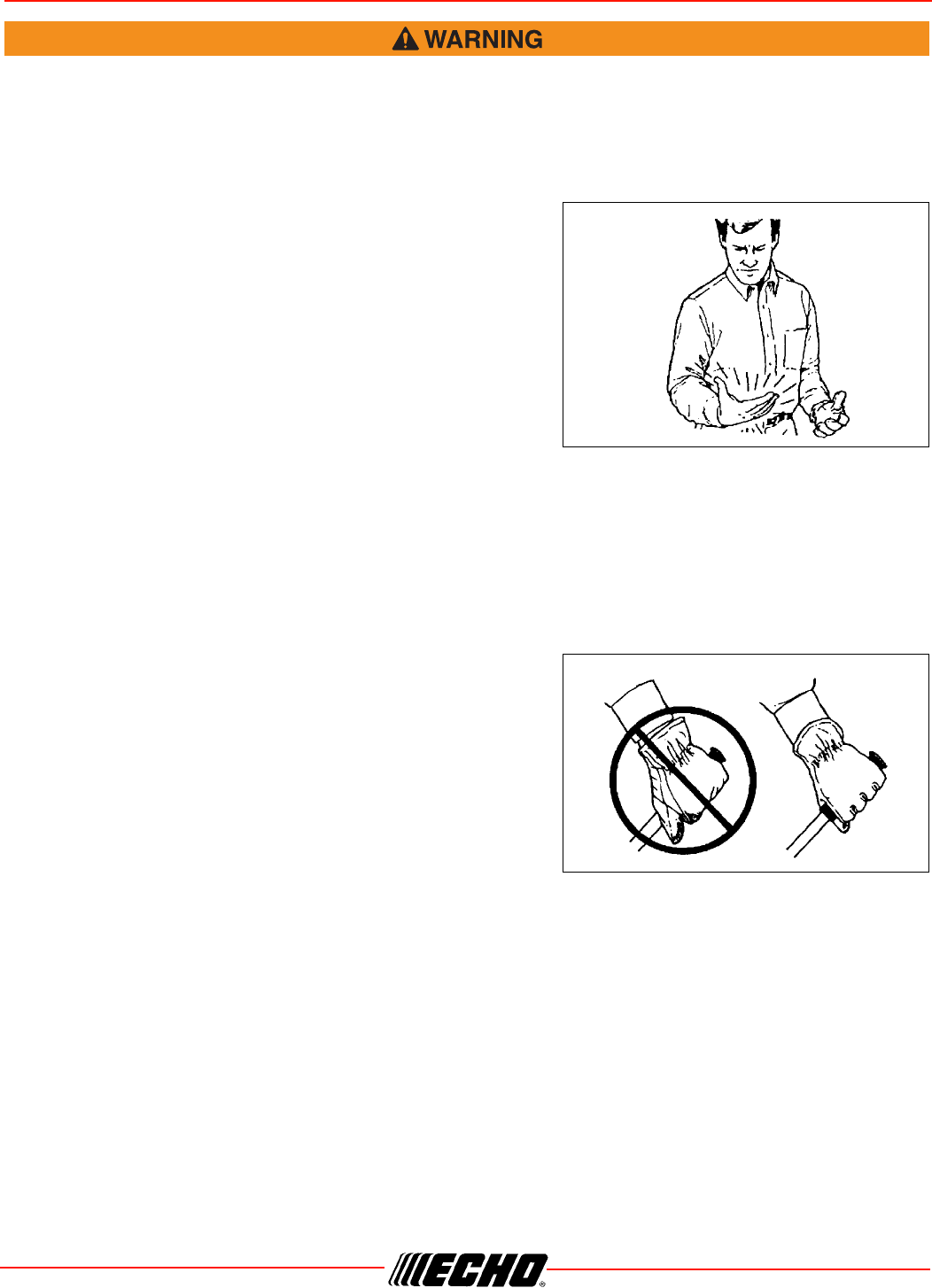
SRM-225 SAFETY
© 2/2014 ECHO Inc.
X7722271109 7
The ignition componentsof this machine generate an electromagnetic fieldduring operation which
may interfere with some pacemakers.To reduce the risk of serious or fatal injury, persons with
pacemakers should consult with their physician and the pacemaker manufacturer before operating
this machine.In the absence of such information, ECHO does not recommend the use ofECHO
products by anyonewho has a pacemaker.
Vibration and Cold
It is believed that a condition called Raynaud’s Phenomenon,
which affects the fingers of certain individuals, may be brought
about by exposure to vibration and cold. Exposure to vibration
and cold may cause tingling and burning sensations, followed
by loss of color and numbness in the fingers. The following
precautions are strongly recommended, because the minimum
exposure, which might trigger the ailment, is unknown.
• Keep your body warm, especially the head, neck, feet, ankles,
hands, and wrists.
• Maintain good blood circulation by performing vigorous arm exercises during frequent work breaks, and
also by not smoking.
• Limit the hours of operation. Try to fill each day with jobs where operating the unit or other hand-held
power equipment is not required.
• If you experience discomfort, redness, and swelling of the fingers followed by whitening and loss of feeling,
consult your physician before further exposing yourself to cold and vibration.
Repetitive Stress Injuries
It is believed that overusing the muscles and tendons of the
fingers, hands, arms, and shoulders may cause soreness,
swelling, numbness, weakness, and extreme pain in those
areas. Certain repetitive hand activities may put you at a high
risk for developing a Repetitive Stress Injury (RSI). An extreme
RSI condition is Carpal Tunnel Syndrome (CTS), which could
occur when your wrist swells and squeezes a vital nerve that
runs through the area. Some believe that prolonged exposure to
vibration may contribute to CTS. CTS can cause severe pain for
months or even years.
To reduce the risk of RSI/CTS, do the following:
• Avoid using your wrist in a bent, extended, or twisted position. Instead try to maintain a straight wrist
position. Also, when grasping, use your whole hand, not just the thumb and index finger.
• Take periodic breaks to minimize repetition and rest your hands.
• Reduce the speed and force with which you do the repetitive movement.
• Do exercise to strengthen the hand and arm muscles.
• Immediately stop using all power equipment and consult a doctor if you feel tingling, numbness, or pain in
the fingers, hands, wrists, or arms. The sooner RSI/CTS is diagnosed, the more likely permanent nerve
and muscle damage can be prevented.



